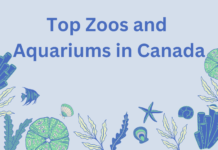Canada is home to 20 UNESCO World Heritage Sites, recognized for their outstanding cultural and natural significance. These sites reflect the country’s rich history, diverse cultures, and remarkable landscapes. The sites are divided into cultural and natural categories, showcasing the heritage and ecological diversity of Canada.
UNESCO Cultural Heritage Sites
Cultural heritage sites are landmarks or areas recognized for their cultural, historical, or scientific significance and are protected by UNESCO under an international treaty. These sites possess outstanding value to humanity and represent remarkable accomplishments or evidence of human history. Cultural heritage includes monuments, groups of buildings, and sites with historical, aesthetic, ethnological, anthropological, artistic, or scientific value.
Key aspects of cultural heritage sites:
- Definition: According to the World Heritage Convention, cultural heritage includes monuments, groups of buildings, and sites with outstanding universal value from historical, artistic, or scientific perspectives.
- Criteria: Cultural heritage sites demonstrate a masterpiece of human creativity or represent an important exchange of human values over a period of time. They provide evidence of a civilization or tradition that is either still alive or has disappeared.
- Types: Cultural heritage sites can include historic buildings, town sites, archaeological sites, and monumental sculptures.
- Significance: These sites reflect human settlement and land use in a way that represents their culture, especially if the area faces irreversible changes. Authenticity, protection, and management of the site are important factors.
UNESCO designates these sites as protected zones to conserve them for future generations, guarding against threats like unrestricted access or administrative negligence. As of July 2024, there are 952 cultural sites, 231 natural sites, and 40 mixed properties on the World Heritage List across 168 countries.
Canada boasts a rich array of cultural UNESCO World Heritage Sites, each offering unique insights into the nation’s history and heritage. These sites, recognized for their cultural, historical, or scientific significance, provide a glimpse into the diverse human experiences that have shaped Canada.
Here’s a more detailed look at each site:
- Head-Smashed-In Buffalo Jump (Alberta): This archaeological site is a testament to communal hunting practices that existed for over 6,000 years. Ruins of a camp, bison bones, and trails provide evidence of how Indigenous peoples hunted bison by driving them off a cliff.
- Historic District of Old Québec (Québec City): Founded by the French in the 17th century, Old Québec is a showcase of a fortified European town, characterized by its unique architecture and historic ruins.
- L’Anse aux Meadows National Historic Site (Newfoundland and Labrador): This site marks the location of the only known 11th-century Viking settlement in North America. It is believed to be one of the earliest European settlements in America, with ruins and recreations of early Norse settlements.
- The Landscape of Grand Pré (Nova Scotia): This cultural landscape reflects the agricultural techniques developed by the Acadian people, featuring dykes and water management systems.
- Old Town Lunenburg (Nova Scotia): Established as a British colonial settlement, Lunenburg stands out with its unique architecture and civic design. It represents one of the best examples of British colonial settlements in the country and is recognized as a National Historic Site of Canada.
- Red Bay Basque Whaling Station (Newfoundland and Labrador): This station represents the most complete example of Basque whaling activity in North America, offering insights into early whaling practices.
- Rideau Canal (Ontario): This historic canal system, originally built for military purposes, now serves as a popular recreational waterway, demonstrating impressive engineering.
- SGang Gwaay (British Columbia): SGang Gwaay, also known as Ninstints, is a former Haida village featuring totem poles and longhouses, showcasing Haida cultural heritage and artistry.
- Writing-on-Stone / Áísínai’pi (Alberta): This cultural landscape, consisting of prairie and coulee habitats, is sacred to the Blackfoot people. Ancient rock art carvings, some dating back 3,000 years, adorn the sandstone hoodoos along the Milk River, holding deep spiritual meaning.
- Pimachiowin Aki (Manitoba/Ontario): A mixed UNESCO World Heritage Site, Pimachiowin Aki is a protected area encompassing both natural beauty and Indigenous culture. It forms part of the ancestral home of the Anishinaabeg and is recognized as an exceptional example of the cultural tradition of “keeping the land”. The area features habitation sites, travel routes, and trap lines that reflect a tradition going back over 7,000 years.
Natural Heritage Sites
Natural heritage sites are specific locations recognized by UNESCO for their outstanding natural features, geological significance, or ecological value. These sites often showcase unique ecosystems, geological formations, or exceptional biodiversity.
Key Aspects of Natural Heritage Sites:
- Definition: Natural heritage sites are natural features, geological and physiographical formations, and delineated areas that constitute the habitat of threatened species of animals and plants of outstanding universal value from the point of view of science, conservation, or natural beauty.
- Criteria: These sites represent major stages of Earth’s history, significant ongoing geological processes, significant biological evolution, or contain superlative natural phenomena.
- Types: Natural sites include national parks, wilderness areas, geological sites, and areas with significant biodiversity.
- Significance: UNESCO designates these sites as protected zones to conserve them for future generations, guarding against threats like unrestricted access or administrative negligence.
Natural Heritage Sites in Canada:
Canada’s natural UNESCO World Heritage Sites are recognized for their outstanding natural features, geological significance, or ecological value. These sites showcase unique ecosystems, geological formations, or exceptional biodiversity. Here’s a detailed look at each:
- Canadian Rocky Mountain Parks (Alberta/British Columbia): This site includes seven national parks in the Canadian Rockies, exhibiting mountain landscapes of exceptional natural beauty, with glaciers, ice fields, alpine meadows, cave systems, lakes, and. The Burgess Shale formation, one of the world’s most important fossil assemblies, is located here and preserves the remains of soft-bodied animals dating to the Cambrian period, providing key insight into the development of major animal phyla.
- Dinosaur Provincial Park (Alberta): The area is a practically undisturbed semi-arid steppe with badlands topography. Fossils of more than 44 species, 34 genera, and 10 families of dinosaurs have been discovered in the park, representing every known group of Cretaceous dinosaurs. More than 150 complete skeletons have been unearthed, together with several non-dinosaur fossils, providing insight into the life in the area 77 to 75 million years ago.
- Gros Morne National Park (Newfoundland and Labrador): With deep ocean crust and rocks of the Earth’s mantle lying exposed, the park illustrates plate tectonics and continental drift. Landlocked freshwater fjords and glacier-scoured headlands in an ocean setting contribute to the natural beauty of this wilderness area.
- Joggins Fossil Cliffs (Nova Scotia): The site at Joggins has produced one of the best fossil records from the Carboniferous period, in particular from 318 to 303 million years ago. During that time, the area was covered by rainforests, the remains of which are the main sources of today’s coal. In addition to plant fossils, the remains of the earliest amniotes illustrate the evolution of terrestrial vertebrates.
- Kluane / Wrangell–St. Elias / Glacier Bay / Tatshenshini-Alsek (Yukon/Alaska): The four national parks and protected areas spanning the border between the United States and Canada contain the world’s largest non-polar ice field and numerous large glaciers. The area, shaped by glacial and continuous tectonic activity, comprises different types of habitats, from high mountains above 16,000 ft (5,000 m) to ocean, coastal forests, and river valleys. Some of the important animal species include grizzly bear, caribou, Dall sheep, and mountain goat.
- Mistaken Point (Newfoundland and Labrador): The reserve is home to the namesake Mistaken Point Formation, which contains one of the most diverse and well-preserved collections of Precambrian fossils in the world. Ediacaran fossils, dating from 580 to 560 million years ago, constitute the oldest known remnants of multicellular life on Earth.
- Nahanni National Park (Northwest Territories): The park is listed for its outstanding geomorphological features. The rivers of the park, in particular the South Nahanni River, carved deep canyons through the mountain ranges and created several waterfalls. There are karst landforms, including limestone cave systems. The park is undisturbed and is home to animals of boreal forests, including grizzly bear, wolf, and caribou.
- Waterton-Glacier International Peace Park (Alberta/Montana): This site comprises the Waterton Lakes National Park in Canada and the Glacier National Park in the US. Both parks are known for their outstanding scenic beauty due to mountains and glacial landforms. The park straddles the Continental Divide and includes the Triple Divide Peak.
- Wood Buffalo National Park (Alberta, Northwest Territories): The park covers large areas of grass and sedge meadows, boreal forests, lakes, rivers, and the world’s largest inland delta, the Peace–Athabasca Delta. There are also salt plains and gypsum karst features. It is home to North America’s largest population of wild bison and is a breeding ground for the endangered whooping crane.
Canada’s UNESCO World Heritage Sites are vital not only for their historical and cultural significance but also for their role in preserving biodiversity and promoting sustainable tourism. These sites provide a unique opportunity to explore Canada’s rich heritage while ensuring their protection for future generations.
Explore more places to travel in Canada.










